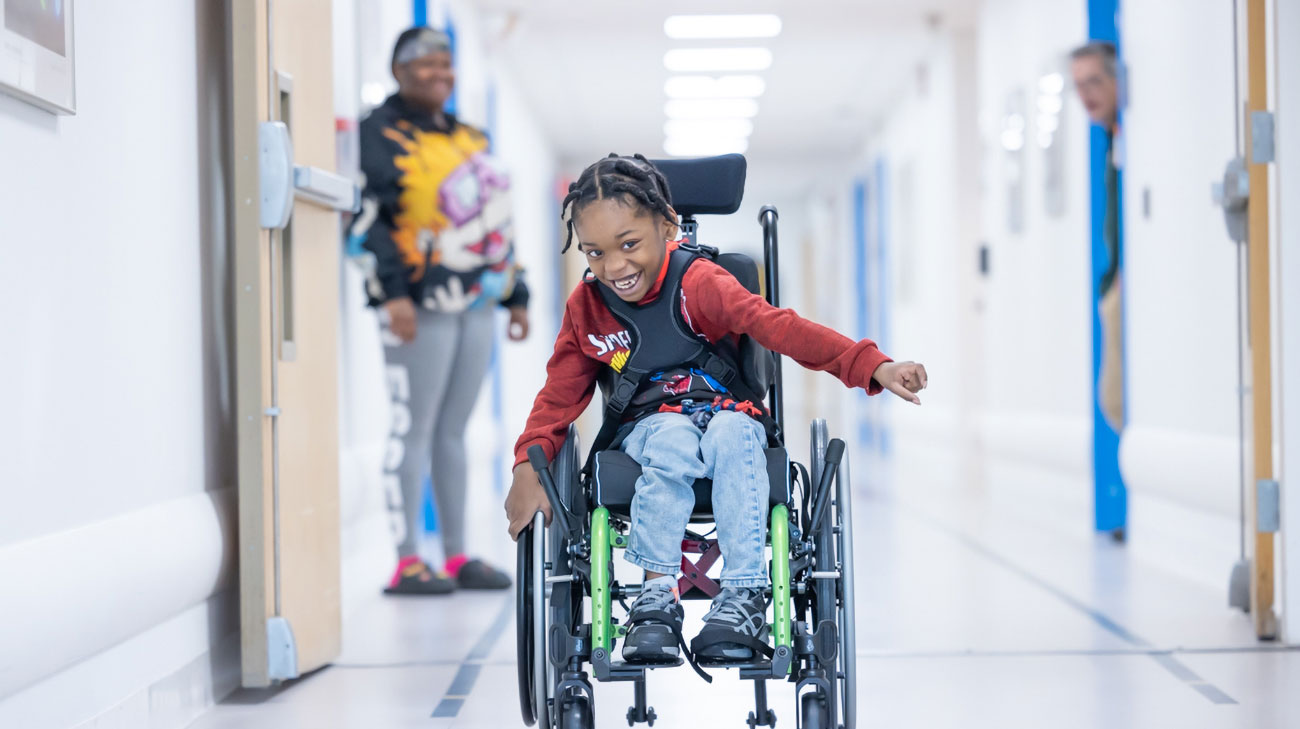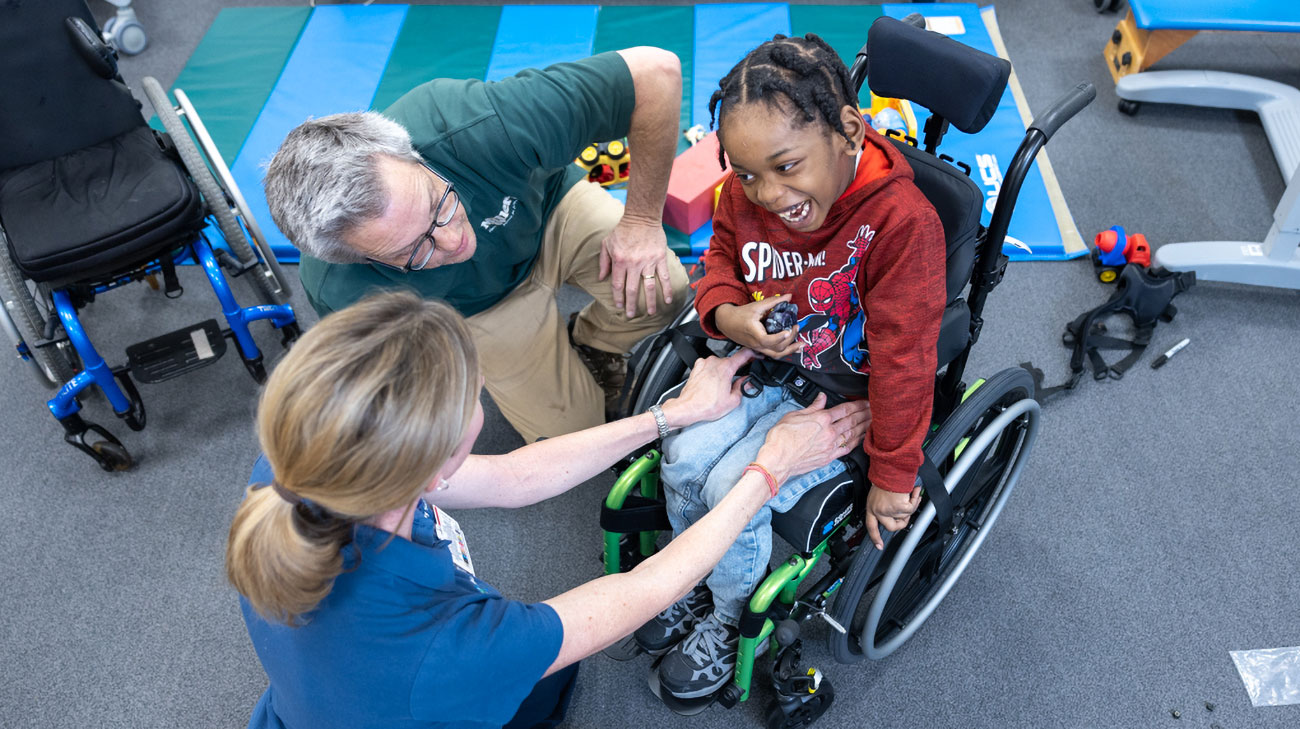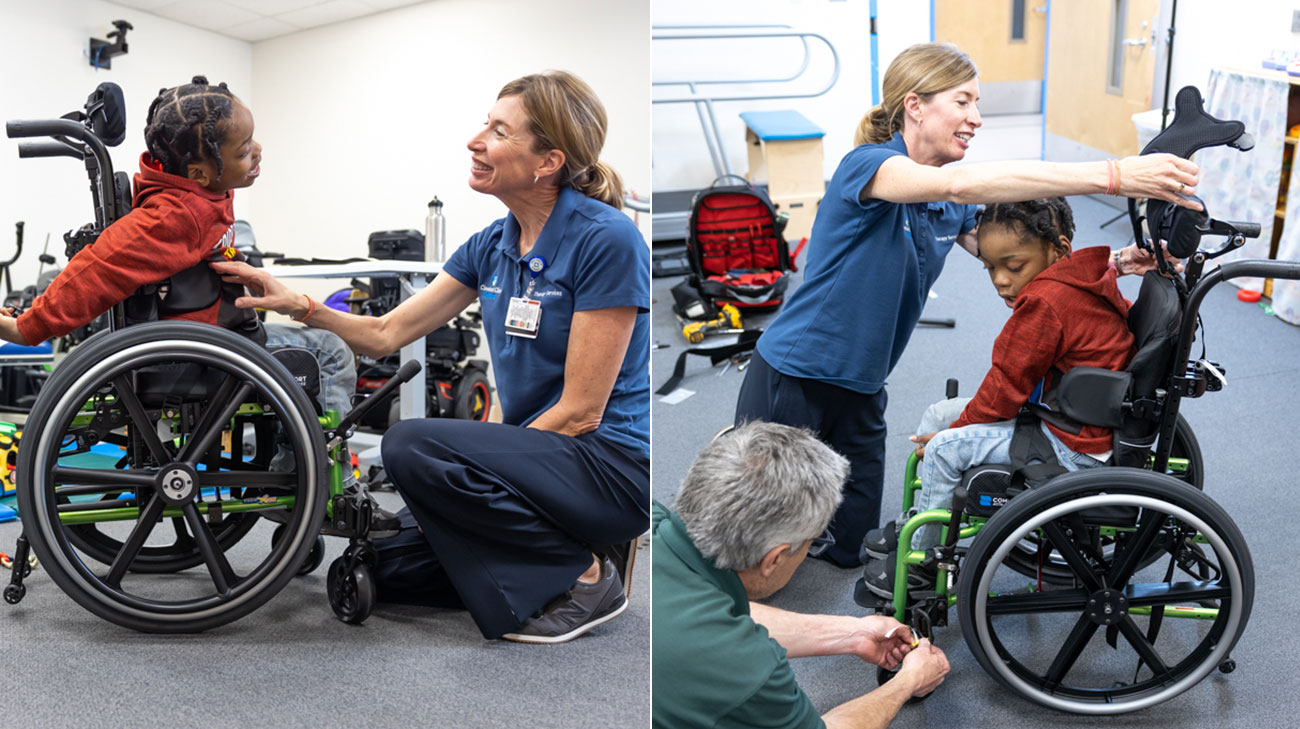
On Memorial Day weekend in 2019, Rose Atkins had plans to go to a cookout at her aunt’s house. But on Sunday night, her then 3-year-old son JaLontae Price began choking in his sleep. She got him out of bed and to the bathroom, where he vomited. Once back in bed, the same thing happened again.
“I tried to get him to walk back to the bathroom, but he kept heading the other way, toward the closet. I knew something was wrong, but didn’t know what it was,” says Rose.
By 6 a.m., JaLontae was staring off at the wall and talking to himself. Then he started to shake. Thinking it might be a seizure, Rose called 911. Paramedics administered seizure medicine and transported JaLontae to the emergency department.
From that moment on, the family’s life changed. No longer developing normally, JaLontae now had difficulty eating and swallowing, along with left-side weakness. His formal diagnosis included left hemiparesis (impacting his left arm and leg); spastic diplegia (impacting his ability to swallow, eat and speak) and hypotonia (impacting his functional mobility and strength), possibly the result of a virus of some kind.
Following his diagnosis, JaLontae was admitted to the inpatient unit of Cleveland Clinic Children’s Hospital for Rehabilitation (CCCHR) on three different occasions in 2019. In early 2020, his therapy continued on an outpatient basis until the start of the COVID-19 pandemic when he was transitioned to home health care.

After the pandemic, JaLontae was again able to resume outpatient therapy, and he’s made significant progress since then.
“From a therapeutic perspective, our goal is to help him achieve the highest level of function and independence that he can,” says Heidi Kempert, an outpatient pediatric therapist at CCCHR. “Initially, we worked on helping JaLontae get ankle/foot orthotics so we could work on ambulation. The orthotics keep his ankles in a good position and prevent them from getting tight.”
JaLontae progressed to a ‘sit-to-standing’ device, a chair of sorts with a lot of extra pieces to hold his trunk upright, provide a place where he can rest his head, a tray to use when eating, etc.
“Other devices, like strollers, didn’t support him in his mid-section. Now, he can stand or sit in that device at home. It puts him in better alignment, which helps with bone health and muscle strength,” explains Kempert.
Sometimes, children like JaLontae require more than one piece of equipment. That’s where the Mobility and Seating Clinic of CCCHR comes into play.

“Our clinic is dedicated to finding solutions for children with positioning and mobility needs,” says occupational therapist Meghan Price. “We address those needs via an evaluation, assessing postural support needs and current skills related to mobility, then provide education, trials and equipment solutions for their challenges. We do this using a collaborative approach with the family, physicians and specialized equipment vendors with the goal of making the best decision for the child.”
Rose needed help getting JaLontae to medical and therapy appointments, and to school. A motorized wheelchair worked well for him but was very complex and difficult to transport. Next up was an ultralightweight manual wheelchair that was much easier to put in and take out of a car. That chair required JaLontae to use both his left and right arms, which he managed to do, but with difficulty. What he needed was a similar chair with one-arm drive so he could control his ability to move with just his strong right arm.
JaLontae, now age 7, recently received that new wheelchair customized for his specific needs and size. It will also be able to grow with him over time (insurance covers wheel mobility every five years, so he’ll next be eligible to receive a new chair at age 12). While some adjustments will need to be made as he continues to use the chair, once it was assured that he was seated securely and well-supported, he was sent home with it to practice.

“He’s very smart. He listens and picks things up quickly. The equipment makes such a difference for him. His face lights up when he can do for himself or move into a room where his siblings or toys are. He gets so excited and has a huge smile on his face.”,” says Rose, who is grateful for all the support she and JaLontae receive from the CCCHR team, where he continues to come for weekly outpatient therapy sessions.
Cleveland Clinic Children’s Hospital for Rehabilitation (CCCHR) is one of only a few freestanding U.S. pediatric specialty hospitals accredited by the Commission on Accreditation of Rehabilitation Facilities (CARF) that accept children with complex medical needs. Physical, occupational and speech/language therapists serve infants and children through age 21 with assistance from recreational, art, music and adaptive equipment specialists. CCCHR is also home to an inpatient pediatric pain rehabilitation program; pediatric integrative medicine to address the physical, lifestyle, emotional and spiritual needs of children; feeding disorders program and dialysis treatment.
Photos courtesy of Cleveland Clinic Children's.
Related Institutes: Cleveland Clinic Children's

